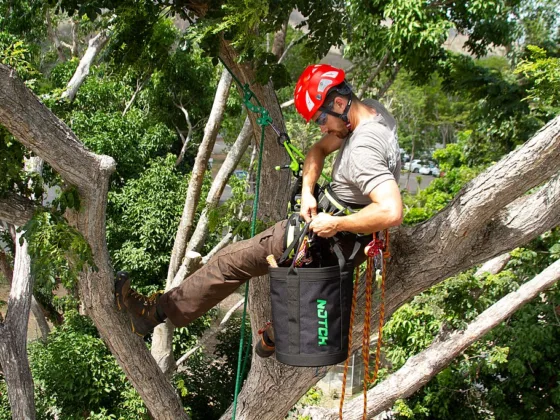Table of Contents Show
A lot of work goes into creating the perfect garden. It is a pleasure to pick every feature, plant, and tree, and to decide where in your garden you want each to go.
After putting in so much time, though, and effort into designing your garden, it can be difficult to make the decision that a part of it needs to go.

At the same time, it is important that when anything in your garden is diseased or dying, you make a smart decision about what the best course of action is. In some cases, tree removal will be necessary.
But how do you know when and how a tree should be removed, or whether it just needs a bit of TLC? Read on to find out the tell-tale signs that it’s time to say goodbye to a tree in your garden.
The Trunk
One of the easiest ways to tell if your tree is dead is through a visual inspection. Begin by taking a look at the trunk of the tree.
Is the bark falling off? Are there large cracks in the trunk? Is there fungus growing along the base of the trunk?
If you notice any of these clues, it’s possible your tree is dying.
The Branches
Another easy way to see if your tree is in distress is by inspecting the branches and leaves. Have you noticed that the leaves have turned brown or fallen off earlier in the year than they normally would? If so, this could be a negative sign.
However, sometimes, only part of a tree is distressed, and the rest can be saved. It can be worth contacting an expert such as Tim Allen’s Tree Services to get their opinion before going ahead with a removal.
Read Also:
The Roots
Sometimes, the issue will be with the tree’s roots. If you see roots popping out through the ground anywhere in your lawn, or near your pool your tree may be having difficulty managing the land it is rooted in.
This does not necessarily mean it is dead, but it could mean that it is unstable and more vulnerable to inclement weather and pests.
DIY vs Tree Removal Service?
Although it is possible to remove your own tree, unless you have experience in this area, or the tree in question is particularly small, it might be better than amateur gardeners do not attempt this themselves.
The risk of injury is too great, and permanent damage to your garden is also possible.
Tree Removal 101
By keeping an eye on your garden, it is possible to spot signs of disease or distress in your trees early on. Doing so may enable you to save it and avoid tree removal altogether.
In the case that you do need to remove a tree, try to ensure you do it in a professional and safe way as possible.
If you’ve enjoyed this content, please have a look at the rest of our gardening guides.









